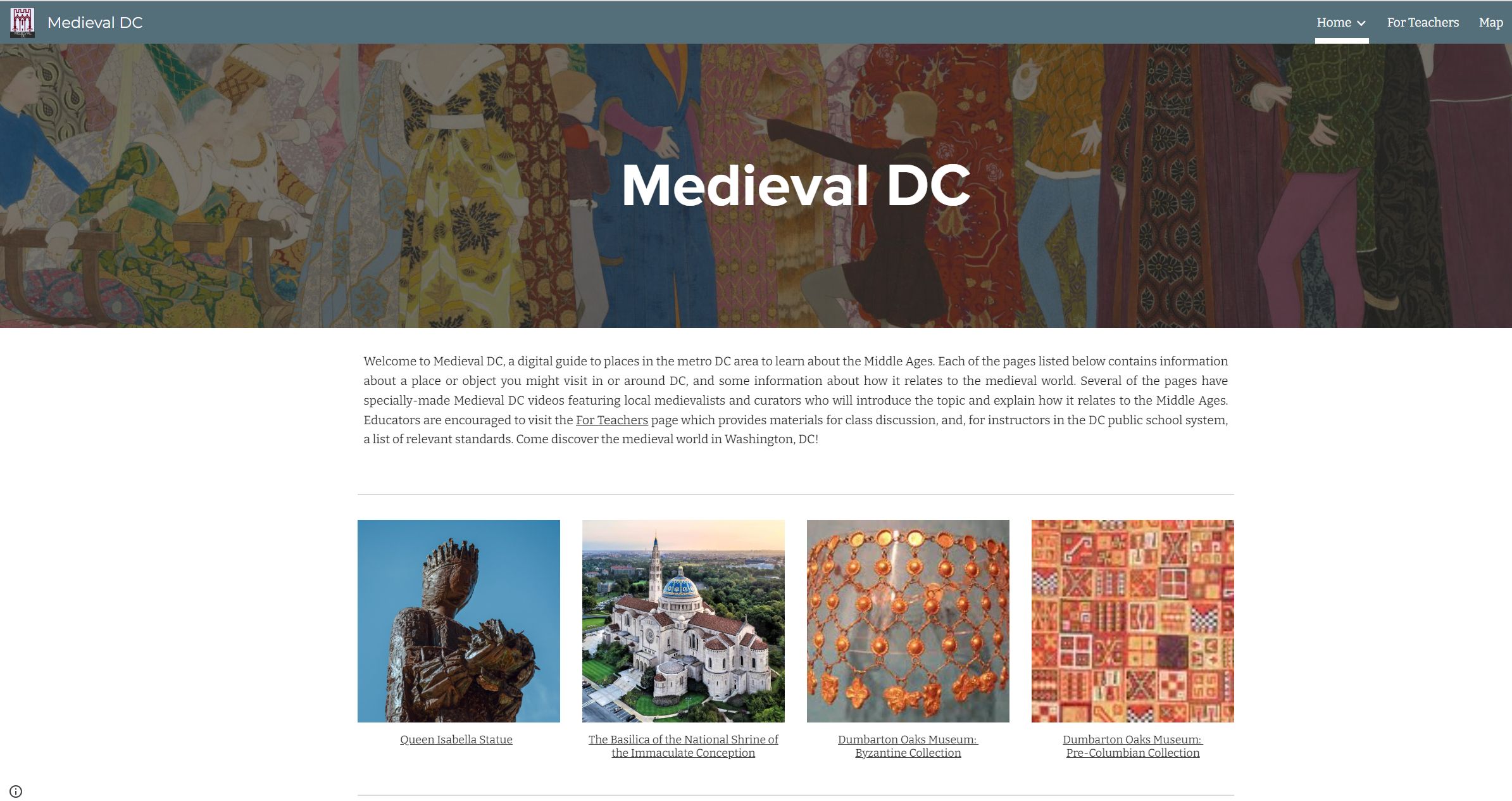
Collaborative Project in Partnership with Catholic University Makes Washington-Area Resources Related to the Study of the Middle Ages Available to a Wide Audience
The Medieval Academy of America, the largest organization in the United States promoting the scholarly study of the Middle Ages, held its annual conference in Washington, D.C. in February 2023, in cooperation with a consortium of Washington-based medievalists, including many affiliated with Catholic University.
To accompany the conference, a group of scholars, curators, and librarians proposed the creation of a website that would highlight D.C.-area locales offering resources and experiences relating to the Middle Ages. Humanities DC (the humanities council of the District of Columbia, affiliated with the National Endowment for the Humanities) provided full funding for the collaborative project, which also included consultation with D.C. Public Schools. The project’s co-directors were Jennifer Davis (early medievalist and Associate Professor of History, Catholic University) and Laura Morreale (an Independent Scholar specializing in medieval Italian cultural history and digital humanities), and its project administrator was Mikkaela Bailey (PhD student in History at CUA).
“Medieval DC” has just gone live: visit it here.
The site highlights 16 locales in the city where students, teachers, and the general public can encounter the medieval. Resources include a clickable map, pages for individual locales, videos (produced by Glenn Østen Anderson, Assistant Professor of Media and Communication Studies, Catholic University), and model lesson plans, bibliographies, assignment ideas, and the like for teachers who would like to encourage experiential learning related to what can be an inscrutable historical milieux for modern students.
The locales include the textual (Magna Carta, at the National Archives), the architectural (the National Cathedral and the Basilica of the National Shrine of the Immaculate Conception), and even the textile (the Textile Museum). The site’s creators also took care to emphasize a global conceptualization of what “medieval” means (with sites including the National Museum of African Art, the National Museum of Asian Art, and the Museum of the American Indian).
Mikkaela comments: “This project was a one-of-a-kind opportunity for a student like me, and I’m so grateful to have been part of it. Digital humanities projects take on a life of their own as the technology either simplifies or complicates your plans. I spent a lot of my time outside, walking around the District looking for medievalisms that could be used in the site. Many of the locations I scouted didn’t make it into the final product for one reason or another but the experience of searching out these places, getting to know more of the city in which I study, and getting to meet and know many scholars and educators in the District made this project one of the highlights of my graduate school experience.”
Professor Anderson recalls: “While my academic specialty is documentary film, I’m also a huge history fan. So when Dr. Davis told me about this project, I jumped at the chance to combine these passions. Working with the museums and institutions featured in the project proved challenging, particularly when I was not able to bring outside lighting into the museums, but we got creative with editing and filming. I’m proud of how this turned out ,and I hope it will serve as a resource for students for years to come.”
And Professor Davis reflects: “We conceived of this project as a way to encourage the use of D.C. as a hands-on classroom to teach the global Middle Ages. We are really happy with the final product, which succeeds in illuminating the great wealth of resources in the area to explore both medieval objects from all over the world and the continuing impact of medievalism today. There really is a ‘Medieval DC’, and we hope this website helps people explore it!”
